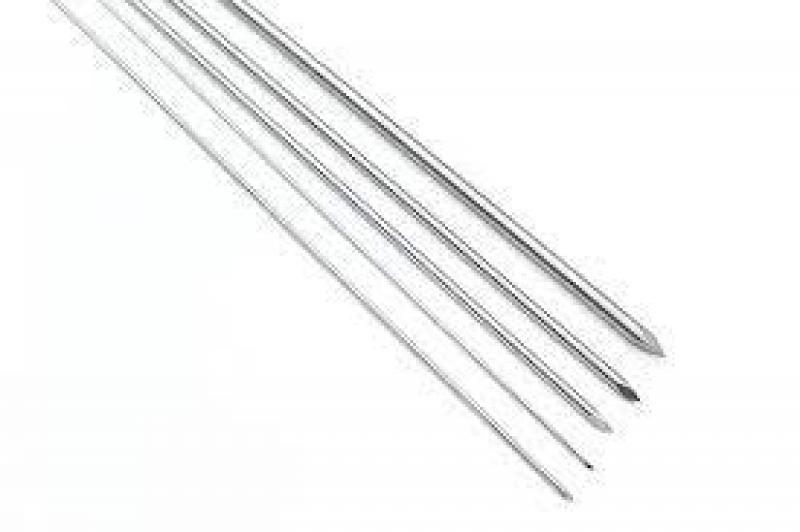In the realm of orthopedic surgery, advancements in medical technology have played a pivotal role in revolutionizing procedures and improving patient outcomes. Among the key tools in orthopedics is the Kirschner wire, often abbreviated as K-wire, named after its inventor, Martin Kirschner, a German surgeon. This slender, stainless steel device has been a cornerstone in bone fixation for decades, aiding in the treatment of various fractures, deformities, and joint-related conditions. In this blog, we will explore the history, design, applications, advantages, and potential limitations of Kirschner wires in modern orthopedic surgery.
1. A Historical Overview:
The development of Kirschner wire dates back to the early 20th century, with Martin Kirschner introducing the concept in the 1900s. Initially designed as a temporary fixation device, the K-wire evolved over the years to become a versatile tool with numerous applications in orthopedic procedures. Its simplicity, cost-effectiveness, and effectiveness in bone fixation quickly gained popularity among orthopedic surgeons worldwide.
2. Design and Construction:
Kirschner wires are typically manufactured from medical-grade stainless steel, making them biocompatible and resistant to corrosion. They are available in various diameters, lengths, and configurations to suit different surgical requirements. The most common types of K-wires include smooth wires, threaded wires, and Steinmann pins, each tailored for specific applications.
3. Applications in Orthopedics:
The adaptability of Kirschner wires allows their use in a wide range of orthopedic surgeries, such as:
a) Fracture Fixation: K-wires play a vital role in stabilizing bone fractures, particularly in the treatment of small bone fractures, like those in the fingers and toes. They can be inserted percutaneously to minimize soft tissue damage, aiding in quicker healing.
b) Osteotomies: In corrective bone surgeries, known as osteotomies, Kirschner wires are often employed to maintain the correct alignment of bones during the healing process. They serve as a temporary fixation device until the bone heals adequately.
c) Joint Fusion: In cases where joint movement needs to be restricted or eliminated, Kirschner wires facilitate joint fusion. The wires are strategically placed to allow bone fusion, ultimately improving stability and relieving pain.
d) External Fixation: Kirschner wires are sometimes used as components of external fixators, devices used to stabilize fractures or maintain bone alignment externally. They can be employed in combination with other hardware, like connecting rods, to form a stable external fixation system.
e) Tendon and Ligament Repair: K-wires aid in the reattachment of tendons and ligaments to bone, helping to restore joint function and stability in cases of traumatic injuries.
4. Advantages of Kirschner Wires:
Kirschner wires offer several advantages that contribute to their continued popularity in orthopedic surgeries:
a) Minimally Invasive: Their small size allows for percutaneous insertion, reducing the risk of damage to surrounding soft tissues and promoting faster recovery.
b) Cost-Effective: Compared to more complex fixation devices, Kirschner wires are relatively inexpensive, making them accessible and widely used in healthcare settings with budget constraints.
c) Versatility: The wide range of diameters and configurations available ensures that K-wires can be adapted for various surgical scenarios, enhancing their versatility.
d) Temporary Use: Kirschner wires are often used as temporary fixators, allowing them to be removed after bone healing, reducing the risk of complications associated with permanent implants.
e) Faster Healing: By maintaining bone alignment and stability, Kirschner wires promote faster bone healing and reduce the risk of malunion or nonunion.
5. Limitations and Complications:
While Kirschner wires offer numerous benefits, they are not without limitations and potential complications:
a) Pin Migration: In some cases, K-wires can migrate or dislodge from their intended position, reducing their effectiveness and potentially causing further damage.
b) Infection Risk: As with any invasive procedure, there is a risk of infection at the pin insertion site, which requires careful monitoring and appropriate measures to mitigate.
c) Soft Tissue Irritation: Kirschner wires passing close to tendons or nerves can cause soft tissue irritation or injury, leading to pain and discomfort for the patient.
d) Stability Concerns: In certain complex fractures or cases requiring long-term fixation, K-wires alone may not provide sufficient stability, necessitating additional hardware.
6. Future Developments:
As medical technology continues to advance, there is a constant drive to improve existing devices, and Kirschner wires are no exception. Researchers and manufacturers are exploring new materials, coatings, and designs to enhance the biocompatibility, reduce complications, and optimize the performance of K-wires in various orthopedic applications.
Conclusion:
Kirschner wires have long been an essential tool in the orthopedic surgeon's arsenal, enabling the effective treatment of bone fractures, deformities, and joint-related conditions. Their simplicity, versatility, and cost-effectiveness have made them a reliable choice for various surgical scenarios. As technology progresses, we can expect continued refinement and advancements in Kirschner wire design, leading to even better patient outcomes and further solidifying their place in orthopedic surgery for years to come.
